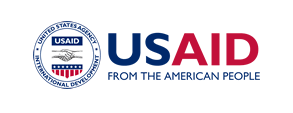The Health Policy Project ended in 2016. Work continued under Health Policy Plus (HP+) until 2022.
NEWS & VIEWS
New PEPFAR Blueprint emphasizes focus on key populations, reducing stigma and discrimination, and maximizing efficiency and effectiveness
Posted November 30, 2012
 |
Secretary of State Hillary Clinton. Photo courtesy of United States Government Work. |
WASHINGTON, DC—On Nov. 29, 2012, Secretary of State Hillary Clinton presented the release of a new strategic plan that outlines the U.S. Government’s response to HIV throughout the world. In her remarks, Secretary Clinton touched on key pillars of HIV intervention underscored in the new PEPFAR (President’s Emergency Program for AIDS Relief) Blueprint. The new document lays out five key principles to guide the concerted effort to achieve the goal of an “AIDS-free generation” – a goal Secretary Clinton proclaimed during last year’s World AIDS Day remarks.
The PEPFAR Blueprint is a 54-page document that reflects lessons learned in nearly a decade’s worth of experience in the global HIV response. During her speech, the Secretary highlighted the Blueprint’s plans for rapidly scaling up the most effective prevention and treatment interventions and targeting key populations at higher risk, with a focus on reducing HIV-related stigma and discrimination and a particular attention to addressing stigma and discrimination in health care settings.
“When discrimination, stigma, and other factors drive these groups into the shadows, the epidemic becomes that much harder to fight. That’s why we are supporting country-led plans to expand services for key populations, and bolstering the efforts of civil society groups to reach out to them,” said Secretary Clinton.
Earlier this year the USAID-supported Health Policy Project released a working paper on Scaling Up Policies, Interventions, and Measurement for Stigma-Free HIV Prevention, Care, and Treatment Services, and another, Addressing Stigma and Discrimination to Improve Maternal Health and Eliminate New Child HIV Infections.
The Secretary also called for an increased focus on women and girls, recognizing the particular needs of females in HIV prevention while integrating HIV services with family planning and reproductive health. The PEPFAR Blueprint cites the need to implement evidence-based tools, with specific mention of the “What Works for Women and Girls” website, which provides the evidence for successful strategies so that programs on the ground can be based on what works. The website is supported by PEPFAR and Open Society Foundations and is being carried out under the auspices of the USAID-supported Health Policy Project and the Public Health Institute. Secretary Clinton stressed that these efforts must also address gender-based violence as an essential part of the response to protect women and girls from HIV.
Secretary Clinton wrapped up her remarks by mentioning the importance of optimizing efficiency and effectiveness of HIV programs to maximize the funding and resources needed to end the epidemic and help countries take ownership of the HIV response at the national level.
Through our efforts to reduce stigma and discrimination, reach key populations, and empower countries to ensure their HIV programs improve health, the Health Policy Project (HPP) remains committed to working together with the U.S. Government in achieving the objectives of the PEPFAR Blueprint.
Read the official PEPFAR Blueprint fact sheet
What's New
- Something to Build On: “Innovation Exchange” Celebrates the Health Policy Project’s Close and a New Beginning
- What Will it Take for Tanzania to Achieve ART Targets and Ensure Long-Term Sustainability of the HIV Response?
- Helping Kenya’s County Leaders Advocate for Increased Health Investments
- HPP Holds Working Meeting on Ensuring Responsible PEPFAR Transitions for Key Populations
- Health Policy Project Celebrates 2016 International Women's Day
- HPP Staff Participate in White House Conference on HIV Stigma Reduction

